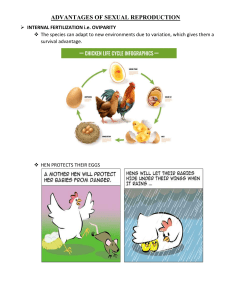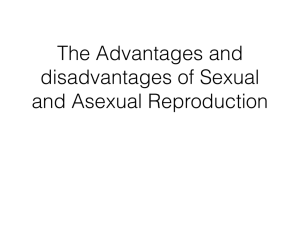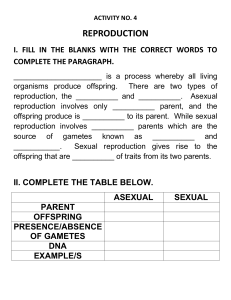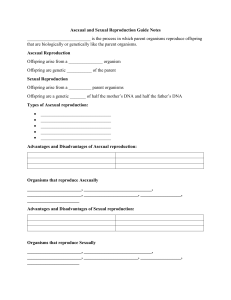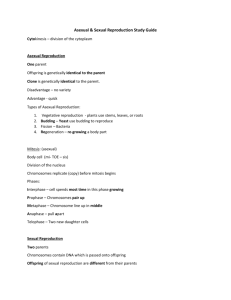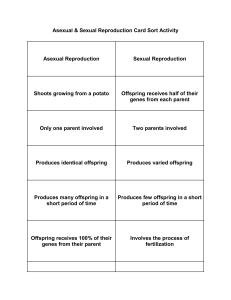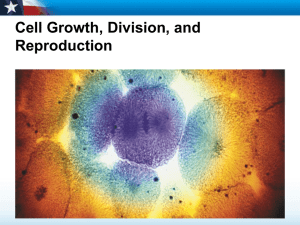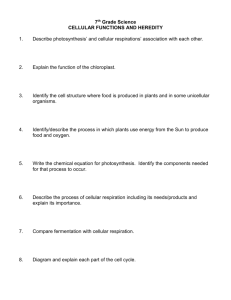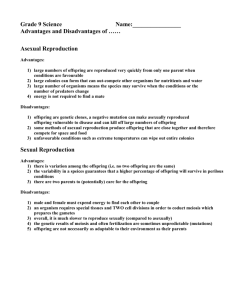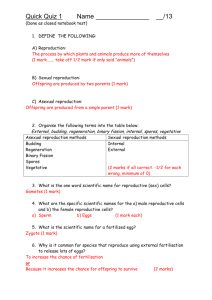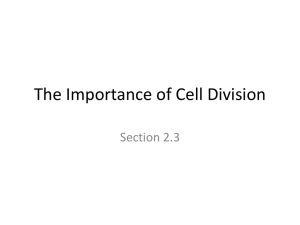B8.1 Revision Notes
advertisement
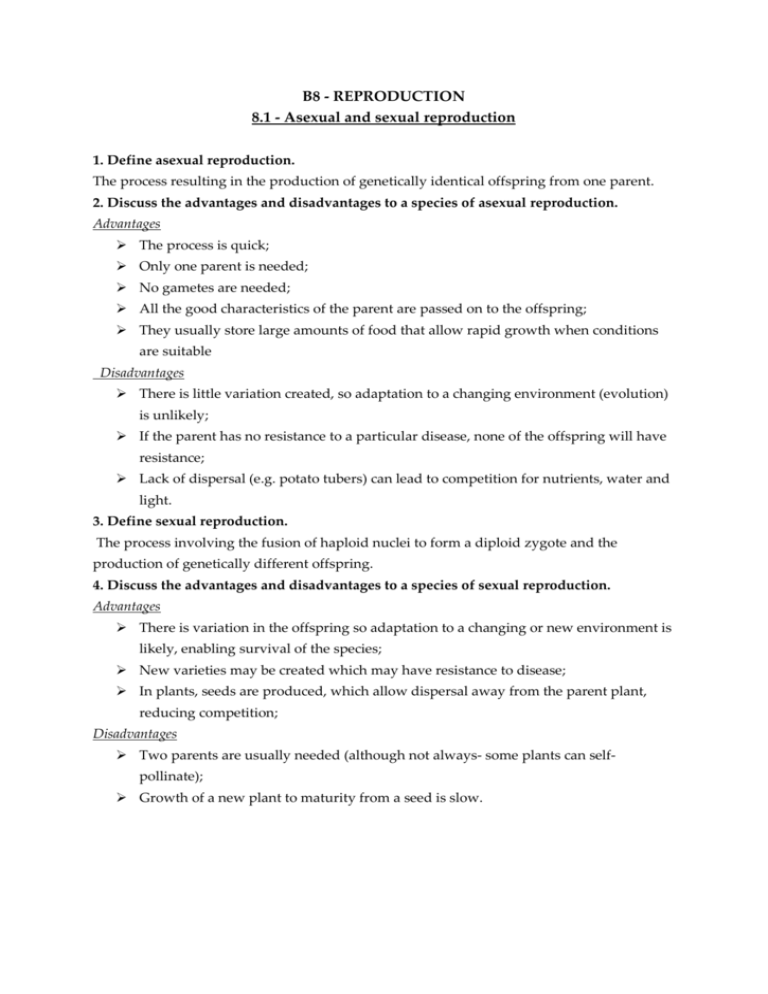
B8 - REPRODUCTION 8.1 - Asexual and sexual reproduction 1. Define asexual reproduction. The process resulting in the production of genetically identical offspring from one parent. 2. Discuss the advantages and disadvantages to a species of asexual reproduction. Advantages The process is quick; Only one parent is needed; No gametes are needed; All the good characteristics of the parent are passed on to the offspring; They usually store large amounts of food that allow rapid growth when conditions are suitable Disadvantages There is little variation created, so adaptation to a changing environment (evolution) is unlikely; If the parent has no resistance to a particular disease, none of the offspring will have resistance; Lack of dispersal (e.g. potato tubers) can lead to competition for nutrients, water and light. 3. Define sexual reproduction. The process involving the fusion of haploid nuclei to form a diploid zygote and the production of genetically different offspring. 4. Discuss the advantages and disadvantages to a species of sexual reproduction. Advantages There is variation in the offspring so adaptation to a changing or new environment is likely, enabling survival of the species; New varieties may be created which may have resistance to disease; In plants, seeds are produced, which allow dispersal away from the parent plant, reducing competition; Disadvantages Two parents are usually needed (although not always- some plants can selfpollinate); Growth of a new plant to maturity from a seed is slow.
